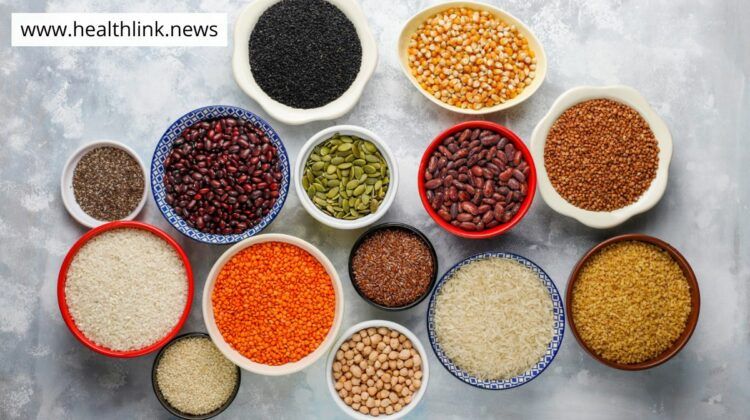How Are Important Whole Grains In Your Diet?

Whole grains are good for you, but they are not the only thing you should be eating. Whole grains are linked to numerous health benefits, and they are mostly considered very nutritious. Yet, some folks claim that refined grains are too high in carbohydrates, impede any intentional weight loss, and spike blood sugar.
All the different types of grains are good sources of complex carbohydrates and some key vitamins and minerals, but on the other hand, it is noted that whole grains are the healthiest kinds of grains and so they are particularly an important part of a healthy diet Grains provide fiber, which helps keep your digestive system working efficiently. They are also rich in fiber — one important part of a healthy diet that helps you feel full and satisfied. This makes it easier for people to maintain healthy body weight. Whole grains are also linked to a lower risk of heart disease, diabetes, certain cancers, and other health problems.
Grains And Their types
Grain-based foods supply half of the world’s calories. A few of the commonly produced and consumed grains are corn (or maize), rice, and wheat. Some of the other popular grains include barley, oats, millet, sorghum, and rye. There are also foods that are prepared and consumed like grains but are technical “pseudo-cereals,” such as quinoa and buckwheat. There are many ways to prepare grain-based foods. They can be eaten raw or cooked by steaming or boiling in water or another liquid.
Grains are made up of a variety of plants that have been grown and extracted from the ground. Grains include wheat, rice, corn, barley, and rye. Grains are used to make bread and pastries, such as bagels and croissants. They are also used for breakfast cereals or oatmeal. Grains can be used to make pasta and tortillas. They are also used to make crackers and chips. Grains are also used in sweeteners like high fructose corn syrup and rice syrup which are added to many packaged foods because they add flavor.
We eat grains as part of our daily diet, whether it is whole wheat flour for our morning pancakes or rye in a sandwich. But did you know that grains grow in many different shapes and sizes? Grains and whole grains are the seeds of grasses that humans cultivate for food. They come in many shapes and sizes, from large kernels of popcorn to small quinoa seeds. The different types of grains include:
- Whole Grain: A good source of fiber, whole grains are good for heart health and digestive health. Whole grains are a great source of fiber, vitamins, and minerals, providing key nutrients required for optimal health. They may also help promote weight loss and heart health, as well as keep blood sugar stable by reducing inflammation and lowering cholesterol.
A whole grain consists of three main parts: bran, germ, and endosperm
- Bran: Bran is the hard outer layer of the grain, which contains fiber, minerals, and antioxidants. It can be used as a whole grain or ground up into flour. Bran is high in fiber and helps remove toxins from your body.
- Germ: The germ is the nutrient-rich core of a plant. It is the embryo that gives rise to a new plant, and it contains carbs, fats, proteins, vitamins, minerals, antioxidants, and various phytonutrients.
- Endosperm: The endosperm is the most important and biggest part of the grain, and it contains mostly carbs (in the form of starch) and protein.
- Refined Grain: Refined grains have had their germ, bran and other nutritious parts removed. This makes them a great choice for any diet because they are low in fiber and loaded with fat. Refined grains are good for digestion, but they lack many essential nutrients. The refining process also removes many nutrients, like fiber, vitamins, and minerals. Refined grains include white flour and rice.
- Enriched Grains: If the grain is enriched, it means that some of the nutrients contained in the original plant have been added back into the grain. While whole grains usually contain all their natural nutrients, some do not. Enriched flour has been fortified with extra minerals and vitamins.
Why Choose Whole Grains?
If you have been told to eat more whole grains, consider it an invitation to ditch the white bread and give your body a makeover. Even though whole grains are a healthy choice, it can be hard to get your daily fiber intake if you are eating refined grains like white bread. Making at least half your grains whole grains can help cut down on the number of sugars, sodium, and saturated fat in your diet. You can easily make half or more of your grains in this food group whole-grains. Whole grains offer lots of nutrients, most with few or no digestive side effects. Bread, flours, and pasta are made from whole-grain barley, corn (maize), oats, rye, and wheat.
Examples of whole grains include:
- Barley
- Brown rice
- Buckwheat
- Bulgur (cracked wheat)
- Millet
- Oatmeal
- Popcorn
- Whole-wheat bread, pasta, or crackers
Whole grains are made from 100% whole grains and germ and include whole wheat, whole rye, and brown rice. With whole grains, a product will not have the same light-colored appearance as white bread. Whole grains can take on many different colors. If you are not sure, check the product label or the Nutrition Facts panel or look for the word “whole” on the package and make sure whole grains appear among the first items in the ingredient list.
What About Whole Wheat Bread?
White whole-wheat bread is made with whole grains, just as is regular whole-wheat bread. It may seem like it does not add up, but white whole-wheat bread is made with whole grains, just as is regular whole-wheat bread. Whole-wheat and white whole-wheat bread are both made with whole grains, and provide similar nutritional benefits. However, white whole-wheat bread contains less fiber than its brown counterpart, so it may not be as filling for your diet. So if you prefer the taste and texture of white bread, but want the nutritional benefits of whole wheat, choose white whole-wheat bread over refined white bread.
Studies On Health Related Conditions Of Whole Grains
There are various studies showing the possible health benefits of the consumption of whole grains. Some of them are listed below:
- Longevity: There are different studies showing that with the intake of each serving of whole grains, there is 9% less risk of death from heart disease over the course of the study.
- Weight: Eating more whole grains is linked to lower body weight. That could be because the fiber in whole grains may help reduce hunger and increase satiety, leading to decreased energy (calorie) intake. In addition, it is possible that eating a diet rich in whole grains can also improve your health.
- Type 2 diabetes: Consumption of whole grains also lowers the occurrence of type 2 diabetes.
- Heart Disease: Did you know that whole grains are good for your heart? A review of 45 studies found that 3 servings (90 grams) of whole grain intake per day is associated with a 22% reduction in heart disease risk and 12% reduction in stroke risk. So, if you are not getting enough whole grains in your diet, it is time to change that start.
- Colorectal cancer: In an observational study, it is seen that the group with the highest intake of whole grains had a 16% lower incidence of colorectal cancer compared to the group with the lowest intake. These findings suggest a dose-response relationship between whole grain consumption and reduced colorectal cancer risk.
Ways To Enjoy More Whole Grains In Diet
There are various ways to add more whole grains such as:
- Intake of breakfasts that include whole-grain cereals, such as whole-wheat bran flakes, shredded wheat, or oatmeal.
- One can exchange whole-wheat toast or whole-grain bagels for plain bagels. In addition, instead of low-fat muffins made with whole-grain cereals, such as oatmeal or others, consume pastries.
- Sandwiches can be made using whole-grain bread or rolls.
- White rice can be replaced with quinoa, brown rice, wild rice, barley, or bulgur.
- Wild rice or barley can be added to soups, stews, casseroles, and salads.
- For extra bulk in ground meat or poultry whole grains, such as cooked brown rice or whole-grain bread crumbs can be added.
- Instead of dry bread crumbs, one can use rolled oats or crushed whole-wheat bran cereal in recipes.
Note: If one eats whole grains it not only makes sure that you get more health-promoting nutrients but also makes your meals and snacks more interesting.
A Word Of Caution
Whole grains are a great source of vitamins, minerals, and other nutrients. If all the grains you eat are whole grains, you may need to take extra care to get sufficient folic acid, a B vitamin. While most refined-grain products are fortified, whole grains are not typically fortified with folic acid. Look for whole grains that have been fortified with folic acid, such as some ready-to-eat cereals. Eat plenty of other folate-rich foods, including fruits, vegetables, and legumes.
